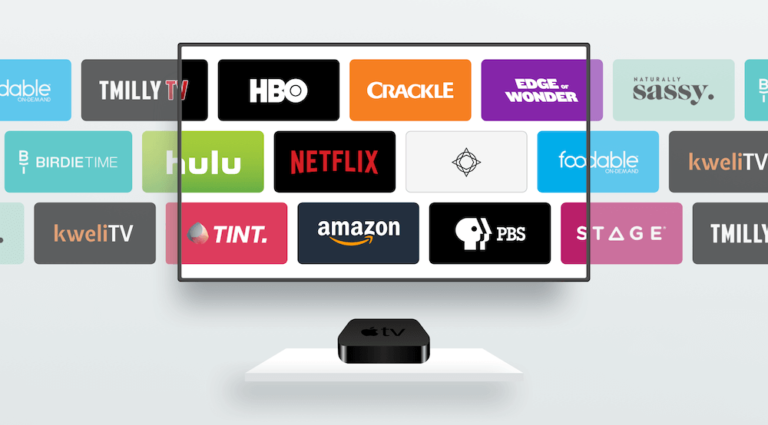Boost your brand with elevator advertising in JBR hotels. Reach tourists daily with DataMySite’s premium OOH ad spaces from AED 10,000/month.
OTT vs Traditional TV Ads: Which Works Better in Dubai?

Summary:
While TV ads have advantages, OTT advertising Dubai has better targeting, more cost-effective media placements, and truly interactive commercials.
February 20, 2025
Did you know that OTT advertising Dubai is expected to grow at an annual 14.5%? (Statista). With this growth in digital consumption, brand advertising budgets have shifted to over-the-top platforms. Does this signify that traditional television advertising has ceased to hold any effective utility? In a place like Dubai, where traditional and digital media share the space, the dilemma of OTT versus traditional TV advertising continues to attain effective relevance, judging this comparative analysis between both advertising strategies, thereby finalising one that truly works best for one.
Know More About OTT Advertising Dubai
In Dubai, OTT (over-the-top) advertising changes how brands and audiences interact. Unlike traditional TV advertising, where an ad is made specifically for one unclear audience, OTT allows targeted advertising primarily through the Internet via streaming services like Netflix, YouTube, Shahid, and Amazon Prime Video. With a growing number of citizens preferring content that can be streamed whenever they want on their devices rather than through old-school cable or satellite, OTT advertising continues to capture more attention.
The Growth of OTT Advertising Dubai
With high internet penetration rates and a tech-savvy audience, Dubai is primed for change in its digital environment. In terms of popularity, streaming services have since emerged as the foremost entertainment source, giving OTT advertising a strategic position for brands to engage with consumers. Highlighted below are some of the reasons OTT media buying Dubai is riveting Dubai-based brands:
1. Fine-grain targeting
One of the greatest benefits of OTT advertising is precision. Brands can create highly customised ads based on user demographics, geographical location, or the interests or habits of the viewing audience, ensuring that ads reach the right consumer group at the right time, resulting in higher rates of conversion success.
2. Cost-effective Compared to Traditional TV Ads
Unlike most expensive television ads, which come with equally taxing production and broadcasting costs, OTT advertising aims to work within a lower budget. The advertisers pay according to the agreed pricing model, which could be either CPM (cost per thousand impressions) or CPCV (cost per completed view), and hence are compelled to pay only when engaged viewers are reached.
3. Measurable and Data-Driven Results
Traditional television advertising provided scant insights regarding campaign performance. On the other hand, OTT ads offer real-time analytics on views, clicks, completion rate, and engagement. Businesses can then use these data points to optimise their campaigns and yield a good return on investment.
4. Higher Engagement and Ad Retention
Unlike in other media, such as social media or YouTube, where users can skip ads, ads on OTT platforms are often unskippable. This translates into much higher engagement rates and better brand recall, allowing businesses to make a more powerful impression on their audience.
5. Multi-device Reach for Maximum Exposure
OTT ads target beyond just television screens. Audiences can consume the ads on mobile devices, tablets, laptops, and smart TVs, opening more opportunities for businesses to reach consumers at different touch points throughout their day.
6. Flexibility of Ad Placement
Brands can determine when their ads will play: pre-roll (before content starts), mid-roll (during the stream), or post-roll (after content ends). This gives businesses the flexibility to create seamless ad experiences that align with their marketing strategies.
7. Local Targeting of Audience-Keen To Dubai Residents
Dubai has people from varied ethnicities and backgrounds, leading to different lifestyle and content consumption preferences. Through OTT media buying Dubai, businesses can geo-target specific areas within the UAE to reach local audiences with their ads.
Reasons Why Traditional TV Ads Matter
A diverse audience characterises Dubai from youthful techies to older populations who still count on television as their primary entertainment. TV advertising has continued to be extremely popular as it freely engages mass audiences with dramatic visuals and sentimental narratives. Here, then, is why television advertising remains relevant:
1. Unflinching Audience Reach
Television can reach millions of viewers at once. Unlike digital platforms, which function with algorithms and aimed adverts, TV would expose the brand to wide audiences without restrictions.
2. Highest Trust and Brand Credibility
Compared to clean online ads, TV commercials are more legitimate and trustworthy. Being featured in well-established TV stations adds to a brand's reputation because commercials are often regarded as built for big money and reputable companies.
3. Best for Branding and Awareness Campaigns
TV advertising is the ideal vehicle for creating widespread brand awareness. Whether promoting a new product or reinforcing an existing brand, television creates a long-lasting impression through repeated advertisements on different channels.
4. Engages Passive Viewers with Smoothness
Unlike annoying digital ads that can be skipped online or ignored completely, TV ads have the power to engage passive viewers during leisure time. Whether out of boredom or rest, whatever must be going on is in perspective from a movie, the news, or some favorite TV show. Marketing messages are more likely to be absorbed, totally free of distraction.
5. Higher Impact - Visual And Audio
Well-crafted TV commercials present the essence of the advertisement through deep visuals, tuneful action music, and compelling storytelling. Larger screens provide ads with a more memorable impact, as such ads, relative to mobile or desktop ads, do have a far-reaching recall.
6. Advantages Of Prime-Time Viewership
Television advertising provides a fantastic chance for brands to run their ads during peak hours, which include slots during evening news, major sporting events, and entertainment shows. Prime-time slots guarantee universal reach, ensuring the brand reaches the maximum audience.
7. Generational Preference By Older Class
Younger audiences may be turning to streaming services, but Dubai's older generations still rely mainly on television for news, entertainment, and daily information. For middle-aged and senior consumers, this makes advertising on TV an effective channel.
Differences Between Digital Streaming and Traditional TV Ads
1. Targeting Ability
One of the most significant factors differentiating OTT advertising from traditional TV advertising is the tight targeting of specific audiences. In Dubai, OTT advertising allows advertisers to use data-driven insights to reach users based on their behaviour, interests, and demographic characteristics. This accuracy allows brands to target the right people with their ads at the right time. Traditional TV ads, however, are broadcast to a large audience and have limited segmentation, which makes them ineffective for hyper-targeted campaigns.
2. Cost Effectiveness
In the overall matrix of budget allocation, OTT media buying Dubai is far more cost effective than its traditional counterpart. OTT allows businesses to optimise promotional costs by only targeting relevant audiences compared to a TV ad, wherein an ad must be paid for relevant airing within a prime-time slot. No wonder a business seeking a higher return on investment finds OTT advertising an attractive option.
3. Measurement and Analytics
Advertising through OTT provides real-time analytics to advertisers, giving them insights into how their ads are doing. Impressions, clicks, engagement rates, and conversions are metrics that assist businesses in optimising their strategies for better results. On the contrary, the inflexible nature of television advertisements makes precise tracking to determine whether they work very difficult. Brands often rely on general audience ratings and surveys to assess TV campaigns.
4. Ad Skippability and Engagement
Another prominent distinction between OTT and traditional TV advertising is the way audiences interact with ads. A significant number of OTT advertising is unskippable, meaning viewers must watch it until completion. Advertisers thus achieve higher engagement and retention of the brand message. In contrast, when watching commercials, TV viewers constantly change channels, thereby reducing the possibility for an advertisement to reach them and gain some engagement.
5. Multi-Device Accessibility
Another plus point for OTT advertising Dubai is that it can be viewed on multiple devices. Be it a smartphone, tablet, laptop, or smart TV, with OTT ads, one can expect a seamless experience across all platforms. Traditional TV ads, however, have this limitation to just one: for the TV screens, thereby preventing the advertisers from reaching consumers on the go.
6. Ad Customisation and Flexibility
No form of advertising is more flexible than OTT. With this platform, brands can fine-tune their campaigns and ads now; advertisers can make changes in their campaigns based on insights driven by performance metrics, audience action, and market trends. In contrast, television ads take too long to produce and go on-air, thus hindering swift changes or tweaking to consumer tastes.
Case Study 1: Dubai Tourism’s OTT Success
Dubai Tourism ran a bold digital campaign with an OTT approach to market international tourism in Dubai. By leveraging OTT platforms like YouTube, Shahid, and others, potential tourists were targeted based on their online activity and search behaviour patterns. The creative video content varied from one to another by demographics and region, ensuring that the maximum reach and conversion were gained.
The results were impressive, with the engagement rate from OTT being 40% higher than with traditional TV advertising. This case study shows how OTT advertising could be an effective promotional tool to reach a global audience with personalised content. Thus, the tourism industry finds it the most preferred option.
Case Study 2: Coca-Cola’s TV Domination in the UAE
Coca-Cola UAE has always relied on traditional TV advertising to keep its brand alive and strong in that market. In Ramadan, a sentimental TV campaign during its prime-time slot endeared itself to millions.
Many people remember the story and the characters, and emotional storytelling has worked wonders with families in the UAE. As OTT rises, this case study proves traditional TV advertising does have a high-value proposition for mass outreach and cultural branding in Dubai.
Conclusion: The Future of Advertising in Dubai
While TV ads have advantages, OTT advertising Dubai has better targeting, more cost-effective media placements, and truly interactive commercials. Since digital ad platforms are taking over without looking back, advertisers must adapt the advertisements and strategies to stamp their place in the industry. Investments in OTT media buying Dubai would allow the brands to maximise reach and ROI.
Contact us today if you need digital advertising advice. Share this article on LinkedIn, Facebook, or Twitter, and let others know how the advertising landscape is changing in Dubai!
Related Articles

Elevator Advertising in JBR Hotels: Engage Tourists with Every Ride
Published On - November 03, 2025

Flyer Distribution Near Dubai Mall: Reach Shoppers in High-Footfall Areas
Published On - November 03, 2025
Promote your brand with flyer distribution near Dubai Mall. Reach thousands daily with DataMySite’s expert offline marketing campaigns across Dubai.

Unipole Advertising in Dubai: Stand Tall, Stay Visible
Published On - November 03, 2025
Boost your brand with unipole advertising in Dubai. Get premium visibility from AED 35,000/month. Go big, go bold with DataMySite’s OOH expertise.



